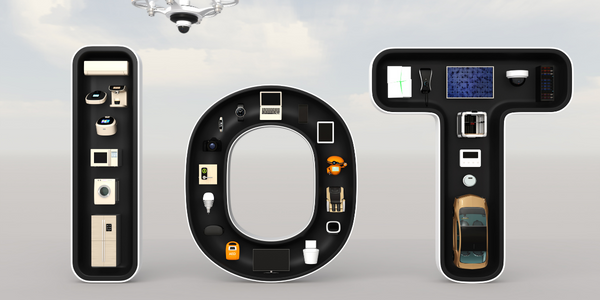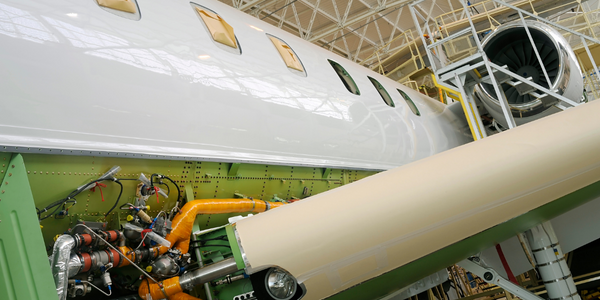New York City Department of Environmental Protection Pioneers Chatbot Innovation Improving Employee Experiences and Operational Efficiency

Customer Company Size
Large Corporate
Region
- America
Country
- United States
Product
- Azure
- Azure AI Bot Service
- Dynamics CRM
- Microsoft Teams
- Power BI
Tech Stack
- Microsoft Azure
- Microsoft Bot Framework
- SharePoint Online
- Azure Active Directory
- Multifactor Authentication
Implementation Scale
- Enterprise-wide Deployment
Impact Metrics
- Customer Satisfaction
- Digital Expertise
- Productivity Improvements
Technology Category
- Analytics & Modeling - Real Time Analytics
- Application Infrastructure & Middleware - API Integration & Management
- Platform as a Service (PaaS) - Connectivity Platforms
Applicable Functions
- Business Operation
- Human Resources
Use Cases
- Chatbots
- Remote Collaboration
Services
- Cloud Planning, Design & Implementation Services
- Software Design & Engineering Services
- System Integration
About The Customer
The New York City Department of Environmental Protection (DEP) is a large government agency responsible for providing safe, clean drinking water and wastewater treatment to the residents of New York City. As the largest city in the United States, New York City has a population of 8.3 million residents and 325,000 government employees. DEP oversees the country's largest combined water and wastewater utility, delivering approximately 1 billion gallons of high-quality drinking water daily through 7,000 miles of water mains and treating 1.3 billion gallons of wastewater per day. The agency is committed to improving the quality of life for all New Yorkers and has been undergoing a digital transformation since 2007 to drive a sustainable future.
The Challenge
The New York City Department of Environmental Protection (DEP) faced challenges in managing the increasing call volumes at their IT and HR service desks, which were only staffed during regular business hours. This led to longer response times and reduced employee satisfaction, particularly for after-hours requests such as password resets. The agency needed a solution to provide 24/7 support to its 6,000 employees, who operate in a 24/7/365 environment, including plant operators and those responding to emergencies like water main breaks. The goal was to improve user experience and drive operational efficiencies by providing continuous availability of services.
The Solution
To address the challenges, DEP partnered with Microsoft and Acuvate to develop AI-powered chatbots using the Microsoft Bot Framework and Skype for Business. These chatbots, named 'Ask BIT' and 'Ask AQUA,' were designed to provide 24/7 support for IT and HR queries, respectively. The chatbots were integrated with DEP's IT service management tool and Microsoft Dynamics 365 for case management, allowing employees to access support, manage tickets, and obtain HR information efficiently. The chatbots were deployed through SharePoint Online and later integrated with Microsoft Teams, providing seamless access for employees. Security measures, including Azure Active Directory and multifactor authentication, were implemented to ensure compliance with regulatory standards, especially during the COVID-19 pandemic when many employees transitioned to remote work.
Operational Impact
Quantitative Benefit

Case Study missing?
Start adding your own!
Register with your work email and create a new case study profile for your business.
Related Case Studies.

Case Study
Premium Appliance Producer Innovates with Internet of Everything
Sub-Zero faced the largest product launch in the company’s history:It wanted to launch 60 new products as scheduled while simultaneously opening a new “greenfield” production facility, yet still adhering to stringent quality requirements and manage issues from new supply-chain partners. A the same time, it wanted to increase staff productivity time and collaboration while reducing travel and costs.

Case Study
Aerospace & Defense Case Study Airbus
For the development of its new wide-body aircraft, Airbus needed to ensure quality and consistency across all internal and external stakeholders. Airbus had many challenges including a very aggressive development schedule and the need to ramp up production quickly to satisfy their delivery commitments. The lack of communication extended design time and introduced errors that drove up costs.

Case Study
Porsche Announces Augmented Reality at Scale, Powered by Atheer
The usual practice for car repairs at a Porsche car dealership is to have a factory representative or regional engineer visit to help diagnose the problem, and sometimes a faulty assembly is shipped back to company HQ for damage analysis. All that costs time and money for customers and dealers alike.

Case Study
Covisint Improves Mitsubishi's Collaboration With Its Supply Chain
Mitsubishi sought to improve supplier relationships on a global basis and to offer an easy-to-use solution to interact with them. In August 2004, Mitsubishi selected Covisint’s platform to help improve sharing of information and collaborative business processes with its global suppliers. Covisint enabled Mitsubishi to provide its suppliers with immediate access to information and applications to obtain more collaborative working relationships

Case Study
Beer Distributor Improves Security, Shipping Capacity, and Service
Enjoy a beer on the upper Texas Gulf Coast, and you can probably thank Del Papa Distributing Company. Founded more than a century ago, the company today distributes 10 million cases of beer annually, from 30 suppliers. More than 375 employees work at headquarters in Texas City and two other distribution centers. The family-owned company has a simple aim: to be a great beer distribution company. So when Del Papa set out to build a new 27-acre headquarters, company leaders thought about how technology could contribute to its greatness. “We wanted the new distribution center to have a single, secure network we could use for physical security, communications, collaboration, and even monitoring the temperature of our inventory,” says Steve Holtsclaw, Manager of Information Systems for Del Papa. The old building, in contrast, had separate networks for voice, data, video, and physical security. Separate networks were expensive and got in the way of business. For example, personnel could only monitor video surveillance cameras from certain workstations. And Wi-Fi performance in the warehouse area wasn’t reliable enough for the voice-activated order-picking system.

Case Study
HSBC's Transition to Conversational Banking through Intelligent Automation
HSBC, one of the world's largest banking and financial services organizations, was facing a challenge with its customer service operations. With over 19,000 customer service agents, the bank was dealing with a high volume of repetitive tasks that put pressure on its agents. The traditional career path in the contact center world was also leading to inevitable attrition, as it was defined as agent → team manager → department manager → operations manager → head of contact centre. This lack of opportunity as the field narrows held back the chance of reaching the highest possible customer satisfaction with every interaction. Furthermore, HSBC was planning to shift towards Conversational Banking, which was expected to grow interactions considerably and require conversational experts to manage the chatbots.






